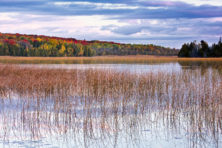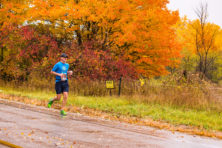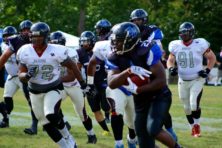The Fall Color Recipe: Door County Hitting Peak [slideshow]
- Share
- Tweet
- Pin
- Share

As of Oct. 1 Door County was at about 10 percent color, meaning some of the most beautiful days for the local landscape are right around the corner.
What makes this dramatic change happen?
When shorter days arrive in the fall, trees respond by producing less chlorophyll, the pigment that makes leaves green. When the tree stops producing chlorophyll completely, the leaves change color.
But no two years of fall color are the same. Some years the landscape is painted in bright reds, other years not. Those differences are traced to weather. According to the Wisconsin Department of Natural Resources website, a run of warm and sunny autumn days with cool – but not freezing – nights will make for a sea of reds.

Yellow, gold and orange colors are more consistent, but summer weather can impact the timing of the color season. A summer drought can delay colors significantly. A warm, wet fall will dim the colors, and a severe early frost will kill the leaves and turn them brown.
Certain trees may change colors as early as late August, though that’s often owed to stresses specific to that tree, said Annie Deutsch, agricultural agent at the UW-Extension in Sturgeon Bay.
So what’s the recipe for great fall colors? The DNR website calls for a warm, wet spring; a moderate summer that’s not too hot or to dry, and a fall full of sunny days and cool nights.
TREE COLORS
Fall leaf color can identify tree species. Here are a few to watch for:
- Oaks: red, brown or russet
- Hickories: golden bronze
- Dogwood: purple-red
- Birch: bright yellow
- Poplar: golden yellow
Maple trees show a whole range of colors
- Sugar maple: orange-red
- Black maple: glowing yellow
- Red maple: bright scarlet














